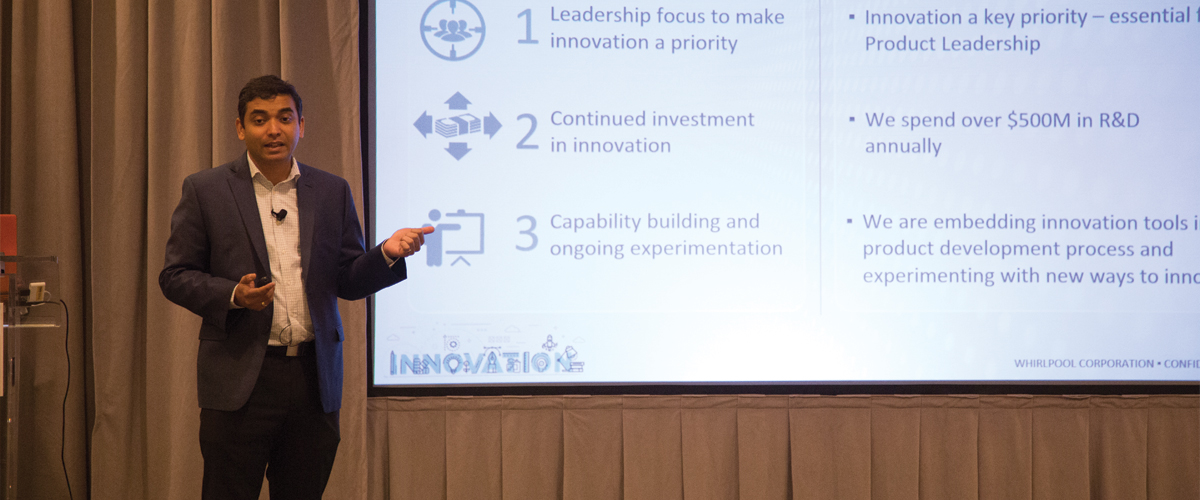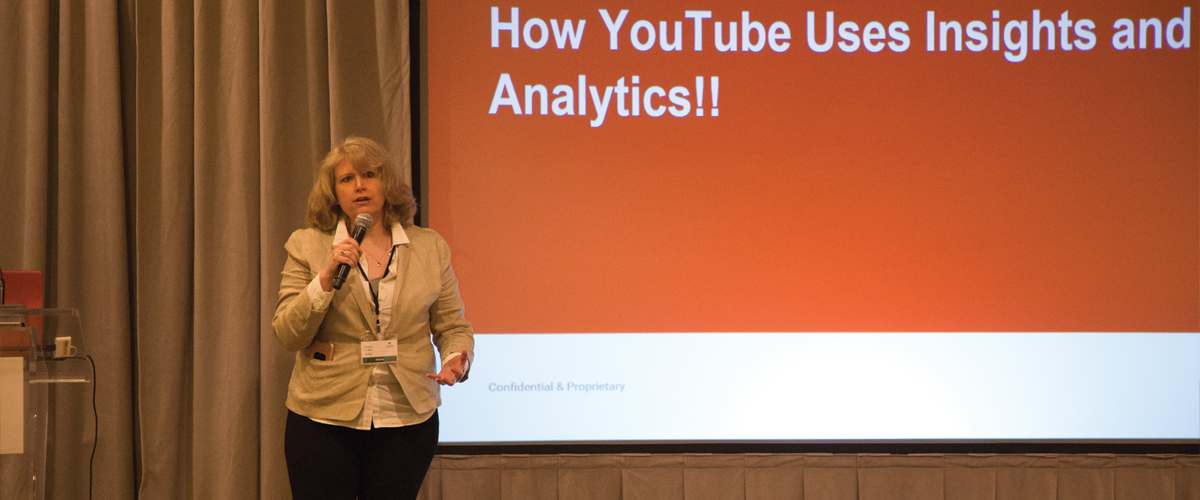Data analytics to drive innovation

Innovation takes priority at Whirlpool and is measured using defined metrics. Whirlpool is embedding innovation tools in its product development process and experimenting with new ways to innovate.
Whirlpool has launched a new innovation tool called Innovation Radar in collaboration with LatentView. Innovation Radar converts valuable customer reviews and ratings data available online into actionable insights to drive Innovation.
Innovation Radar provides 360° view of customer feedback and is useful to do the following:
- Analyse consumer reviews to understand needs, purchase behaviour, and sentiment
- Benchmark innovation against competition
- Identify new areas of innovation based on customer buying patterns
How YouTube uses insights and analytics
In her session, Cheryl covered how the YouTube uses RACI, PM tools and various frameworks to stay organized, focused and to provide clarity to the learning objectives. Here are a few key points from the talk:
- Every marketing campaign starts with a go-to marketing plan, leading to campaign measurement and a learning plan which is an iterative process with constant feedback from the insights generated
- The M & L framework could be used to identify metrics to measure the progress towards fulfilling business and marketing goals at different stages of the conversion funnel. Additionally, it also helps define a clear goal measurement plan with details on reporting cadence and various data sources. Finally, it helps achieve and simultaneously separate business learning from marketing learning
- The Social Brand Index framework is used towards Brand Health Measurement at YouTube with all the sub scores and final scores measured as values relative to those of competitors. The framework has the scores placed under three buckets related to Outcome Perception and one related to Brand Equity
- To demonstrate the impact of analytics, the learnings are shared across the organization using brown bag sessions, emails, newsletters and dashboards. To achieve maximum benefit, insights should be generated quickly by breaking up bigger projects, curating the most relevant insights into stories, and sharing the learnings along the way
In-app mobile advertising on search platforms
In-app mobile advertising is proliferating in a world where consumers are increasingly accessing digital media via apps on mobile smartphones. This talk used detailed micro data generated from large scale field experiments implemented on a global restaurant search-platform, to study several questions about in-app advertising in mobile search.
We ask: How much return does a typical mobile search ad produce? Is consumer behavior on the app characterized by search and comparison or mostly driven by the organic recommendation algorithm? Are high ad-positions worth it? How do you assess the advertising? Are clicks a good metric to assess the value of advertising? Is disclosure of sponsorship good or bad? How “native” should advertising be on the platform?
Based on our results, we find that in-app ads produce high return; that consumer behavior is driven by substantial search and comparison that positions have low effects on conversion; that clicks are a poor way to assess advertising efficiency and that unlike the conventional wisdom, disclosing the sponsorship status of ads improves conversion. These results have implications for the design of ad-driven content platforms and the assessment of mobile advertising markets.




